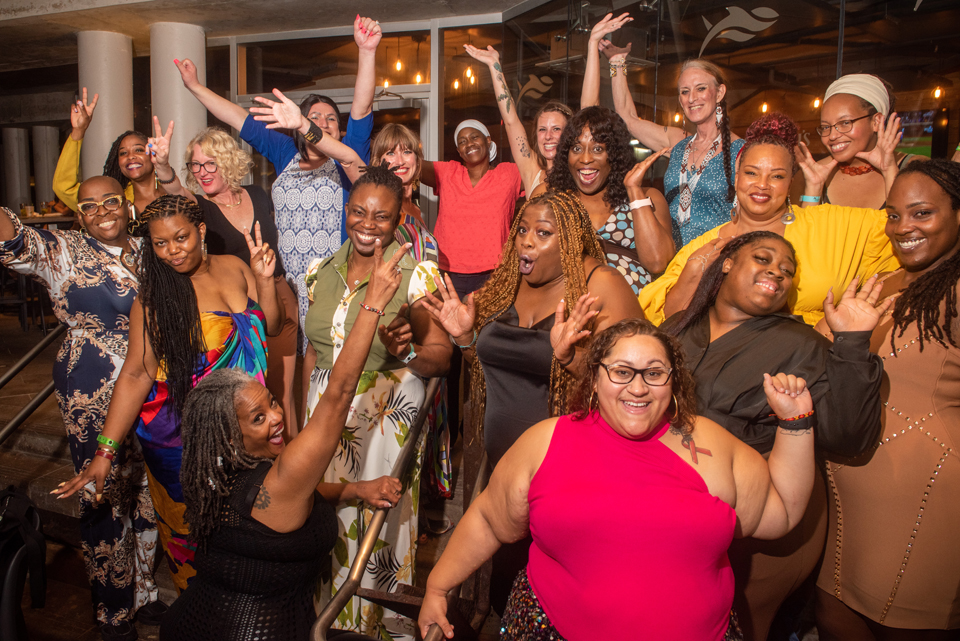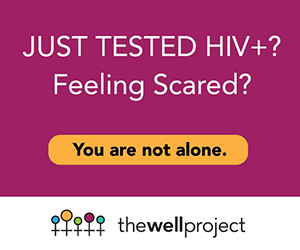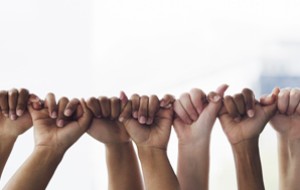By Bridgette Picou
The 26th annual United States Conference on HIV/AIDS (USCHA 2022) convened in San Juan, Puerto Rico, October 8 – 11, 2022 – in person for the first time in three years. Members of The Well Project's community wrote recap articles sharing their unique perspectives on conference sessions and events of interest to our communities. Read on and check out more of The Well Project's coverage of this momentous gathering.
According to the US Census Bureau, the southern region of the United States makes up 40 percent of the population but accounts for nearly 45 percent of all people living with HIV and 51 percent of new diagnoses. This stark fact is how the documentary My Faith. My Story. starts out. It details the journeys of several people living in the southern part of the US and how their HIV diagnosis affected their faith and relationship with the church, and how the faith community was not accepting of their diagnosis.
I attended this session at USCHA this year because my own relationship with faith and God has always been a complicated one. My personal HIV diagnosis didn’t change that relationship in a big way, but I know people for whom it did. The session was hosted by Cary Goodman who serves as the national program director for the Balm in Gilead, which is a non-profit organization that focuses on the intersection of faith and health for people of the African Diaspora. Joining him were one of the church elders from the film, Carmarion D. Anderson-Harvey, who is a vibrant and visible trans woman of color and serves as the national co-minister and South region coordinator for TransSaints ministry of TFAM (The Fellowship of Affirming Ministries); and Elder Shonda Jones, EdD, of Wake Forest University - another vibrant woman of color and of faith.
According to the film, Pew Research reports that Black Americans are the most religious racial/ethnic group in the US. Having grown up in Catholic Church, attended a Baptist church, with Methodist and Muslim friends alike, I am unsurprised by this fact. There were at least five churches I could think of in my neighborhood growing up. Black folks have long leaned on God and the church to navigate life crisis and triumph. In fact, the research shows that this is true for Black lesbian, gay, bisexual, transgender and queer, intersex or asexual persons and those living with HIV. Why then is the relationship between LGBTQ+ folks and the church so complicated? Why is it so fraught with stigma and shame? The film seeks to explore this relationship.
The documentary is a collaborative effort between various agencies (which I will list below along with a link to view the film) and addressed the storyline in an almost roundtable style, switching from individual stories to a group conversation. The people in the film are a mix of faiths and ethnicities, community members and activists, church leaders and people who are living with HIV and who are HIV negative. I appreciated the fact that it was a mixed group of people because it underscores the fact that faith is not limited to any one religion of type of person.
In a moment that physically hurt like a punch in the stomach, one of men in the film revealed that when he moved from Puerto Rico to North Carolina, a state worker knocked on his door to advise him that persons living with HIV were tracked by the state. That law has since been repealed, but it is a bleak reminder that stigma has been alive and well for a long time. In contrast to that sad reminder was a moment that I may have almost missed if I wasn't paying attention. One of those moments that, if in church, I might have stood up and clapped my hands or yelled out a “Praise Jesus.” I’m paraphrasing, but basically the line was: “The church as a faith institution, it is not good enough for it to be a house of worship. It needs to be a safe space no matter what life experience.” People living with HIV don’t have enough safe spaces.
The documentary itself is a quick watch at only about 28 minutes. But much is packed into those 28 minutes. I like the fact that Pastor Carmarion made it a point to show the different ways that the church can integrate HIV education into its structure. Oftentimes people think of church as only a Sunday or Saturday affair depending on faith. The truth is, there are Bible studies that happen multiple times a week, there are ministries and church events – these are all ways to present HIV information and reduce stigma without having to do it directly from the pulpit.
People fear coming out in church because they fear being ostracized. They fear people knowing their status and rejecting them. Part of what is so devastating about church-related stigma is that it is a twofold hurt. One, that your faith home which should be a safe space is not; and two, that the people within the safe space who have the same love for a higher being that you do are now rejecting you as though you are not good enough to love or receive love from that higher being.
The dialogue in this session focused on trying to think outside of the box about the problem. Cary asked about common themes that people got out of watching the movie, which included responses like stigma, fear, and rejection. He then asked for people to come up with ideas on how to combat those issues within the church. There was discussion about how we must take the mantle of the subject up and shake up the church because it is a cornerstone of Black communities and other communities of color. It definitely was a robust conversation about a topic that often gets swept under the rug.
Especially in the South, because religion and faith are so tied into everyday life there, it is imperative that the church open the doors and begin to have these conversations to normalize HIV. I purposely chose saying “open the doors” – because it is mentioned in the movie and is the way that Black churches invite people to give their life to God, and to join the congregation of a church. My Faith. My Story. is worth watching, and it's also worth having a conversation about with people you may know in the church or that are of faith.
Be well
My Faith. My Story. Video from an event co-sponsored by COMPASS Initiative (Wake Forest); RAHMA (which is an Arabic word for “mercy”); Southern AIDS Coalition; United States HIV/AIDS Faith Coalition; and National Faith HIV/AIDS Awareness Day, 29 August 2021.





